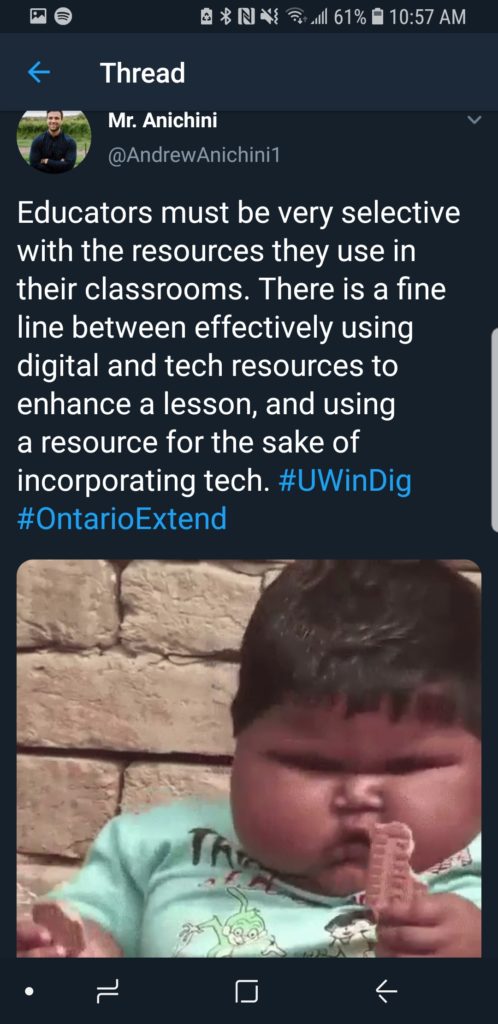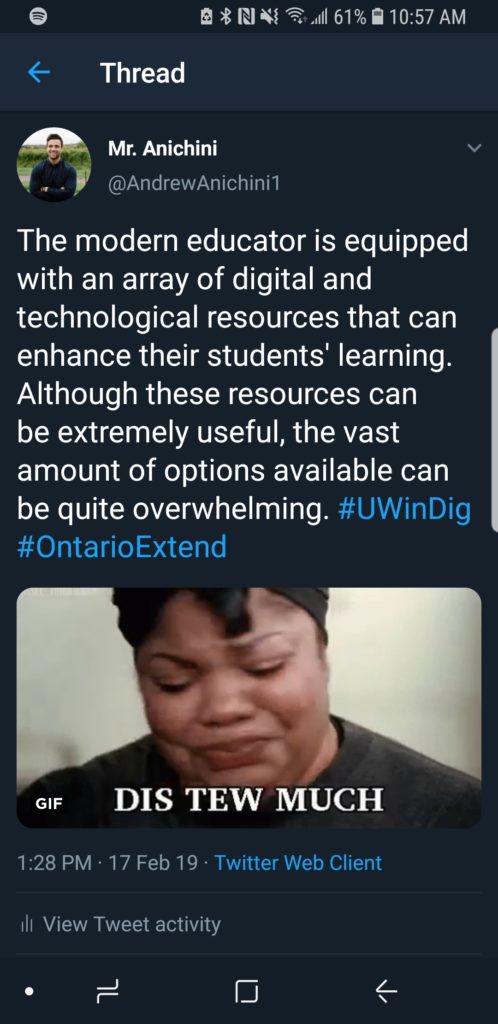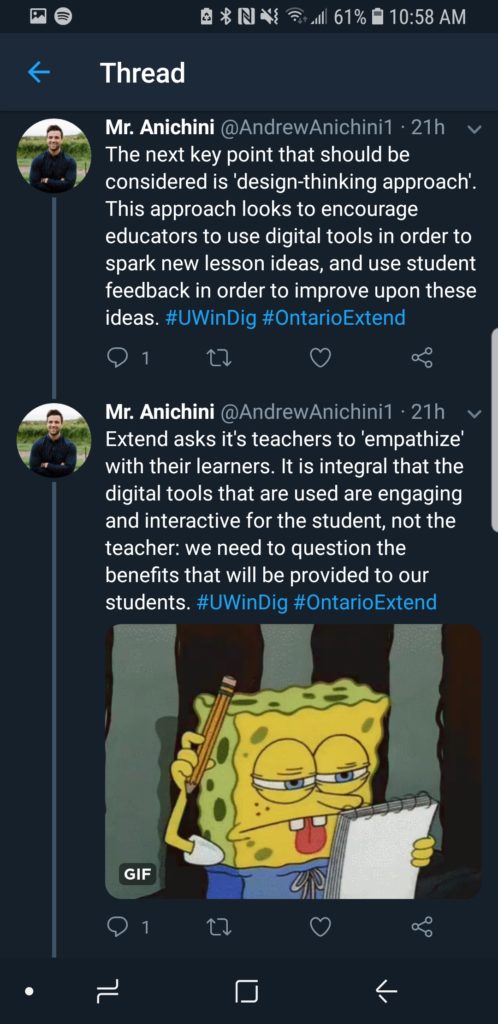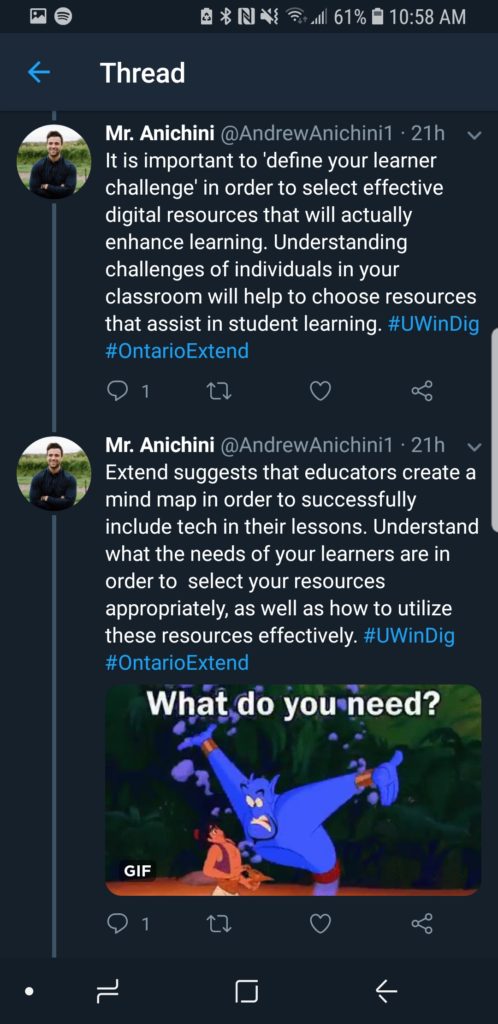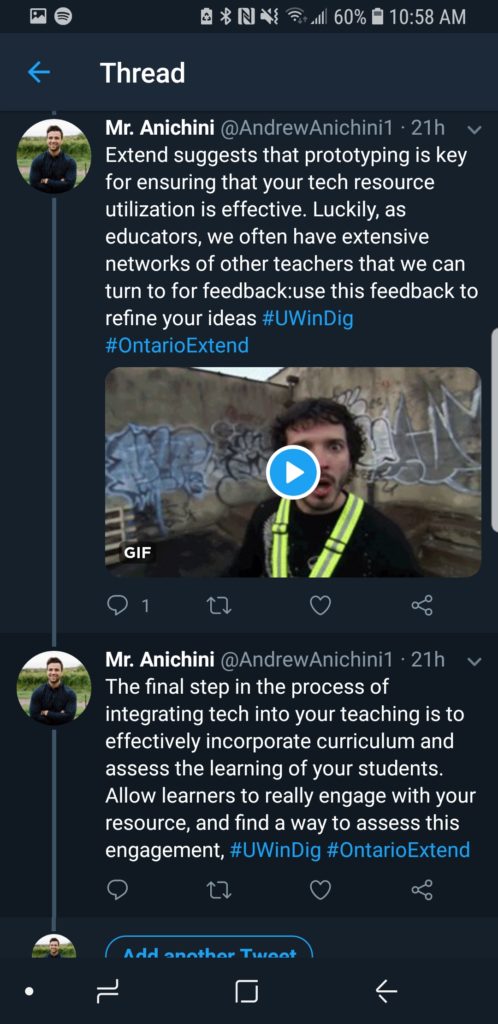The modern educator has a wide array of resources available that can enhance their teaching and maximize student learning. Within the last decade or so, there have been many developments by the way of tech and digital resources that can help educators teach to the individual learning needs of each of their students. Although it is helpful to have so many resources to choose from, it can be overwhelming to choose appropriate resources that actually enhance the lesson.
A wise man once said “with great power comes great responsibility”: this phrase stays true with modern access to resources. Educators far too often include tech and digital resources that are either ineffective or do not enhance their lessons as a result of the overwhelming selection they are exposed to. These resources are sometimes selected in order to add a tech element to their lesson, but have no real substance or add any value. Educators must be picky – choosy with the resources they use, ensuring that they actually add something positive to their lesson.
eCampusOntario understands the struggles that many educators face when trying to incorporate effective and valuable digital resources within their lessons. In an effort to mitigate these struggles, they have developed a module called ‘Extend’ that looks to help individuals select appropriate resources and utilize them to the maximum potential. There are different modules that approach the issue from multiple angles, however, I will be focusing on the potential of the module from the point of view of an educator. 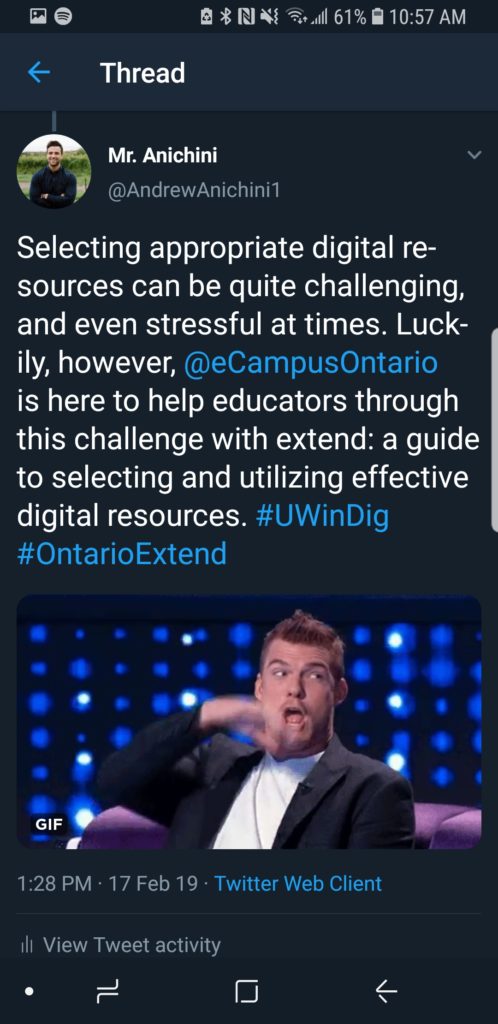
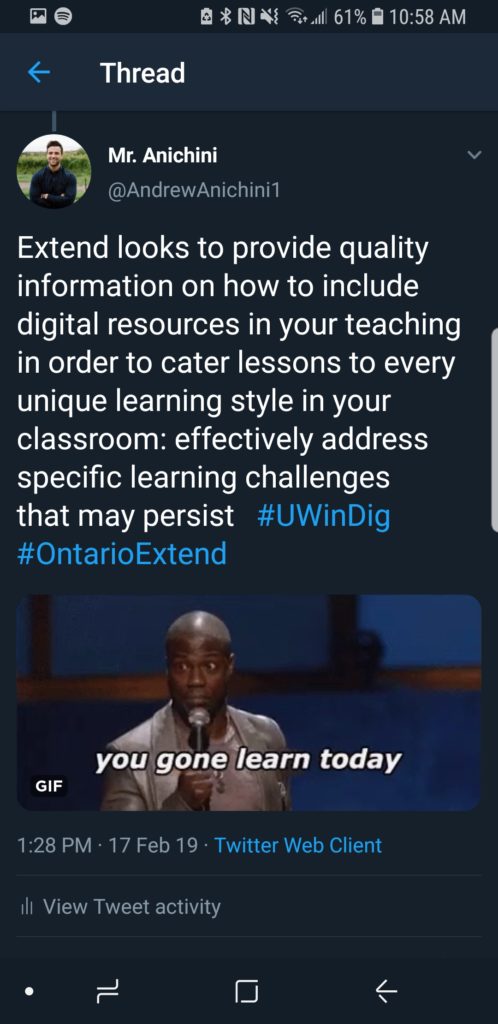
Extend emphasizes the importance of developing and maintaining digital literacy in order to safely use digital resources. Developing an understanding of the ulterior motives behind some of the resources available to us such as information sharing and target marketing can help educators select resources that are safe for their students to use. When selecting digital resources for your classroom, it must be understood that you are ultimately responsible for the ‘cyber safety’ of your students. You must be absolutely sure of what is happening with your students’ information.
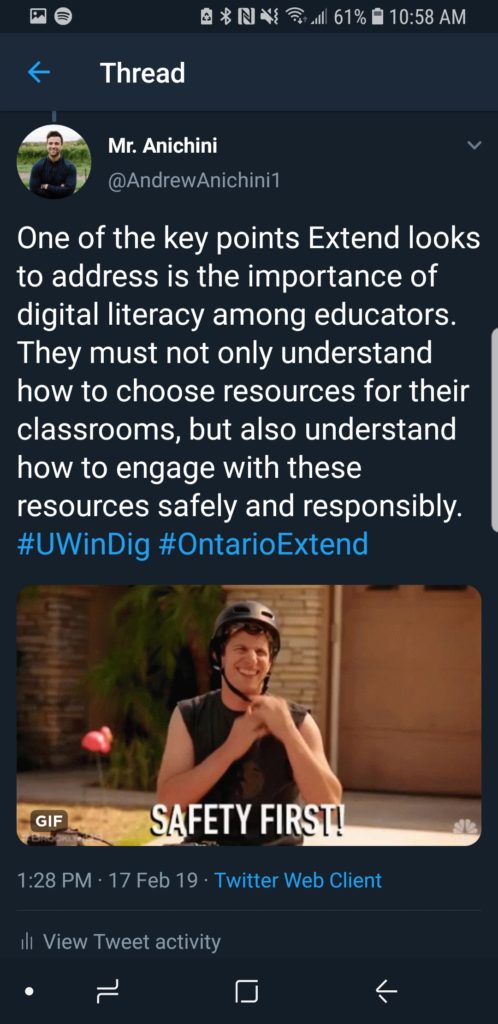 One of the points that extend outlines within its module is the idea of using digital resources in order to ‘spark’ new lesson ideas and using student feedback in order to improve these lessons. This is a framework called ‘Design-thinking-approach’: using digital resources in an effort to create innovative and engaging lessons. Student feedback will provide the educator with the necessary information they need in order to tailor the lesson to student needs and desires.
One of the points that extend outlines within its module is the idea of using digital resources in order to ‘spark’ new lesson ideas and using student feedback in order to improve these lessons. This is a framework called ‘Design-thinking-approach’: using digital resources in an effort to create innovative and engaging lessons. Student feedback will provide the educator with the necessary information they need in order to tailor the lesson to student needs and desires.
Extend also urges educators to ’empathize’ with their students in order to appropriately select resources for their lessons. Resources should be used in order to engage students and address their individual learning needs. It is common for educators to select resources based on their own personal learning preferences rather than selecting them with their students’ learning preferences in mind.
Extend provides effective and useful strategies to maximize the potential of the digital resources being used. They suggest that the teacher creates a mind map that outlines the uses of the resource, the needs of the students, as well and how the resource will be utilized. Although I am not personally the mind map type of person and will without a doubt never actually use one, I can see this being useful to someone who is a visual learner.
It is integral to first understand what the needs and challenges that are faced by your students first in order to appropriately select effective resources. Using this understanding of the struggles that are present in a classroom, an educator may select resources that look to address these struggles and effectively mitigate them.
One of the key parts of the process of sourcing, exploring and utilizing effective digital resources is prototyping, sharing and getting feedback on what you have done. Using the knowledge and experience of the teachers in your network will help you to ensure that you are utilizing sources to their maximum potential, and not just including digital resources in your lessons for the sake of incorporating tech. The changes you make to your lesson based on the feedback you receive is the final step in the process of exploring, analyzing and selecting a digital resource that will enhance your lesson.
Although I do think that extend can be useful for some people who are trying to navigate through the congested world of digital resources, I do not find it to be particularly useful for my own individual needs. I look forward to seeing how my fellow classmates feel about the module, as well as how they have chosen to summarize its uses.
Have a look at EcampusOntario’s ‘Extend’ here and begin the process of selecting effective and appropriate digital resources.

